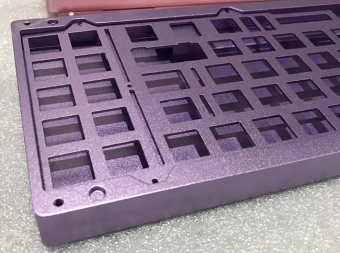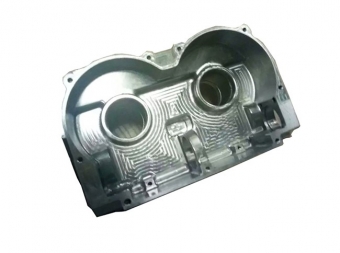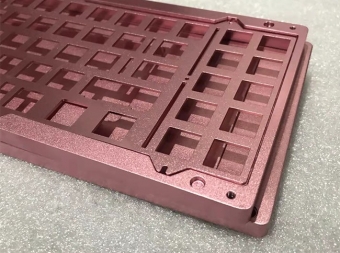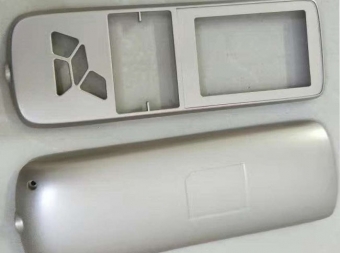


heavy metal cnc conversion The machining process begins by using CAD software to create a 3D model of the desired part. The model is then imported into CAM software, which generates tool paths and instructions for the CNC machine tool. Once the design and specifications are finalized, the metal pieces are mounted on the CNC machine and the cutting tools begin running.
In the heavy metal cnc conversion process, a computer program generates a set of instructions, or code, which are then sent to the machine's controller unit. The code contains information about the specific tools, speeds, and feeds required to create the required part. The machine's movements are then controlled by a computer, following programmed instructions to produce a final product with incredible precision. Thanks to advanced technology and automated controls, metal CNC machines can operate continuously and require minimal human intervention. This increases production efficiency, reduces labor costs, and shortens turnaround time for finished parts.
| Material: |
Aluminum (6061-T6, 6063, 7075-T6,5052) etc... Brass/Copper/Bronze etc... Stainless Steel (302, 303, 304, 316, 420) etc... Steel (mild steel, Q235, 20#, 45#) etc... Plastic (ABS, Delrin, PP, PE, PC, Acrylic) etc... |
| Process: | CNC Machining, CNC turning, CNC milling, CNC lathe machining, CNC boring, CNC grinding, CNC drilling etc... |
| Surface treatment: |
Clear/color anodized; Hard anodized; Powder-coating; Sand-blasting; Painting; Nickel plating; Chrome plating; Zinc plating; Silver/gold plating; Black oxide coating, Polishing etc... |
|
Gerenal Tolerance: (+/-mm) |
CNC Machining: 0.004 Turning: 0.004 Grinding(Flatness/in2): 0.003 ID/OD Grinding: 0.004 Wire-Cutting: 0.005 |
| Certification: | ISO9001:2008, ROHS |
| Production capacity: | depend on complicacy of different products and the quantity |
| Experience: |
15 years of CNC machining products 3 years of automation machine manufacturing |
| Packaging : |
Standard: pearl cotton and bubble bag, carton box and seal For large and big quantity: pallet or as per customers' requirement |
| Lead time : | In general:9-11days |
| Term of Payment: | T/T, Paypal, Trade Assurance etc... |
| Minimum Order: | Comply with customer's demand |
| Delivery way: | Express(DHL,Fedex, UPS,TNT,EMS), By Sea, By air, or on your requirement |



heavy metal cnc conversion FAQs Guide. we will delve into the specifics of heavy metal cnc conversion machining and explore its advantages, applications, and key considerations for successful implementation. Whether you are new to the field or looking to expand your knowledge, this guide will provide a comprehensive overview of this revolutionary manufacturing process. So, let's begin our journey into the world of heavy metal cnc conversion machining!
1.What are the different types of tool changes used in heavy metal cnc conversion machining?
1. Manual Tool Change: This is the most basic type of tool change and involves manually exchanging the cutting tool by hand. 2. Automatic Tool Change: This type of tool change is automated and is typically used in CNC machining centers. The tool is automatically exchanged by a robotic arm or a tool changer. 3. Quick Change Tooling: This type of tool change is used in CNC lathes and involves a quick-change tool holder that allows for rapid tool changes. 4. Tool Presetter: This type of tool change is used in CNC machining centers and involves a tool presetter that measures the tool and sets it to the correct position before it is used.
2.About heavy metal cnc conversion production equipment
Metal CNC production equipment is a type of computer-controlled machinery used to produce metal parts and components. It is used in a variety of industries, including aerospace, automotive, medical, and industrial. CNC production equipment is capable of producing complex shapes and intricate details with high precision and accuracy. It is also capable of producing parts with tight tolerances and repeatability. CNC production equipment is used to produce parts for a variety of applications, including automotive, aerospace, medical, and industrial.
3.Is it possible to produce prototypes with heavy metal cnc conversion machining?
Our company has many years of heavy metal cnc conversion experience and expertise. Yes, it is possible to produce prototypes with metal CNC machining. CNC machining is a process that uses computer numerical control (CNC) machines to cut and shape metal parts with precision. It is a popular choice for producing prototypes because it is fast, accurate, and cost-effective.
4.Can CNC machines process multiple parts at once?
Our heavy metal cnc conversion products undergo strict quality control to ensure customer satisfaction. Yes, CNC machines can process multiple parts at once. This is done by using multiple tools and multiple spindles, which can be programmed to work simultaneously. This allows for faster production and more efficient use of resources.

5.What are the common applications of heavy metal cnc conversion machining in the medical industry?
1. Orthopedic Implants: Metal CNC machining is used to create orthopedic implants such as hip and knee replacements, spinal implants, and dental implants. 2. Surgical Instruments: Metal CNC machining is used to create precision surgical instruments such as scalpels, forceps, and clamps. 3. Medical Devices: Metal CNC machining is used to create medical devices such as stents, catheters, and pacemakers. 4. Prosthetics: Metal CNC machining is used to create prosthetic limbs and other body parts. 5. Diagnostic Equipment: Metal CNC machining is used to create diagnostic equipment such as MRI and CT scanners.
6.Is it possible to perform multiple operations on a single piece using heavy metal cnc conversion machining?
Yes, it is possible to perform multiple operations on a single piece using metal CNC machining. Depending on the complexity of the part, multiple operations such as drilling, milling, turning, and tapping can be performed on a single piece.
7.What are the advantages of using heavy metal cnc conversion over traditional machining methods?
We focus on our customers' needs and strive to meet their expectations, so we take this very seriously. 1. Increased Precision: CNC machining offers greater precision than traditional machining methods, allowing for more accurate parts with tighter tolerances. 2. Increased Speed: CNC machining can produce parts faster than traditional machining methods, allowing for faster production times. 3. Increased Versatility: CNC machining can be used to produce a wide variety of parts with complex geometries, allowing for greater design flexibility. 4. Reduced Waste: CNC machining produces less waste than traditional machining methods, resulting in lower material costs. 5. Improved Safety: CNC machining eliminates the need for manual labor, reducing the risk of injury.
8.What is the role of CAD software in heavy metal cnc conversion machining?
heavy metal cnc conversion is not a product only, but also can help you comes to money-making. CAD software is used to create 3D models of the parts that need to be machined. The CAD software is then used to generate the CNC code that will be used to control the CNC machine. The CNC code contains instructions for the machine to move the cutting tool around the part in order to create the desired shape. The CAD software also allows the user to simulate the machining process, which helps to ensure that the part will be machined correctly.

9.How does the cutting fluid affect the overall efficiency of heavy metal cnc conversion machining?
Cutting fluids can have a significant impact on the overall efficiency of metal CNC machining. Cutting fluids can reduce friction between the cutting tool and the workpiece, which can reduce the amount of heat generated during the machining process. This can help to reduce tool wear and improve the surface finish of the machined part. Cutting fluids can also help to reduce the amount of time needed to complete a machining operation, as well as reduce the amount of energy needed to complete the operation. Finally, cutting fluids can help to reduce the amount of smoke and dust generated during the machining process, which can improve the working environment for the machinist.
10.What are the different types of heavy metal cnc conversion machines available in the market?
We maintain a certain amount of R&D investment every year and continuously improve operational efficiency to provide better services to our cooperative customers. 1. Lathe CNC Machine: A lathe CNC machine is used for cutting, drilling, and turning metal parts. It is one of the most common types of CNC machines used in the manufacturing industry. 2. Milling CNC Machine: A milling CNC machine is used for cutting, drilling, and shaping metal parts. It is used for creating complex shapes and intricate details. 3. Plasma Cutting CNC Machine: A plasma cutting CNC machine is used for cutting metal parts with a high-temperature plasma arc. It is used for creating intricate shapes and details. 4. Laser Cutting CNC Machine: A laser cutting CNC machine is used for cutting metal parts with a high-powered laser beam. It is used for creating intricate shapes and details. 5. Waterjet Cutting CNC Machine: A waterjet cutting CNC machine is used for cutting metal parts with a high-pressure stream of water. It is used for creating intricate shapes and details.
11.Is it possible to perform reverse engineering using heavy metal cnc conversion machining?
Yes, it is possible to perform reverse engineering using metal CNC machining. This process involves taking a physical object and using a CNC machine to create a 3D model of the object. This model can then be used to create a new version of the object or to modify the existing object.
12.What is the role of coolant in heavy metal cnc conversion machining?
We adhere to the principle of quality first and have a complete production quality management system and quality inspection process. Coolant plays an important role in metal CNC machining. It helps to reduce friction between the cutting tool and the workpiece, which helps to improve the cutting performance and extend the life of the cutting tool. Coolant also helps to reduce heat generated during the machining process, which helps to prevent the workpiece from warping or cracking. Additionally, coolant helps to flush away chips and debris from the cutting area, which helps to improve the surface finish of the machined part.

13.Can heavy metal cnc conversion machining be used for internal threading?
We focus on innovation and continuous improvement to maintain a competitive advantage. Yes, metal CNC machining can be used for internal threading. CNC machines are capable of producing a variety of thread forms, including straight, tapered, and buttress threads.
14.How long does it typically take to master the skills of heavy metal cnc conversion machining?
Our products & services cover a wide range of areas and meet the needs of different fields. The amount of time it takes to master the skills of metal CNC machining depends on the individual and the complexity of the parts being machined. Generally, it can take anywhere from a few months to a few years to become proficient in CNC machining.
15.What is the role of the spindle speed in heavy metal cnc conversion machining?
We are a professional heavy metal cnc conversion company dedicated to providing high quality products and services. The spindle speed is an important factor in metal CNC machining. It determines the speed at which the cutting tool moves across the material, and affects the quality of the finished product. A higher spindle speed will result in a faster cutting process, but can also cause the cutting tool to wear out faster. A lower spindle speed will result in a slower cutting process, but will also reduce the wear on the cutting tool. The spindle speed must be carefully adjusted to ensure the best results.
16.About heavy metal cnc conversion production skills training
Metal CNC production skills training is a type of training that teaches individuals how to use CNC machines to produce metal parts. This type of training is typically offered by technical schools, community colleges, and other educational institutions. It can also be offered by companies that specialize in CNC production. The training typically covers topics such as machine setup, programming, and operation. It also covers safety procedures and quality control.

17.What are the environmental impacts of using different coolants in heavy metal cnc conversion machining?
The environmental impacts of using different coolants in metal CNC machining depend on the type of coolant used. Generally, coolants used in metal CNC machining can be divided into two categories: water-soluble and oil-based. Water-soluble coolants are generally considered to be more environmentally friendly than oil-based coolants. They are biodegradable and do not contain hazardous chemicals. However, they can still cause environmental damage if not disposed of properly. Oil-based coolants are not biodegradable and can contain hazardous chemicals. They can also cause air and water pollution if not disposed of properly. Additionally, they can be flammable and can cause fires if not handled properly.
18.How does the size of the cutting tool affect the accuracy of heavy metal cnc conversion machining?
We operate our heavy metal cnc conversion business with integrity and honesty. The size of the cutting tool affects the accuracy of metal CNC machining in several ways. A larger cutting tool will produce a larger cut, which can lead to inaccuracies if the part is not designed to accommodate the larger size. A smaller cutting tool will produce a more precise cut, but it may also require more passes to achieve the desired accuracy. Additionally, the size of the cutting tool will affect the speed of the machining process, as larger tools require more time to complete a cut.
19.What are the different types of cutting processes used in heavy metal cnc conversion machining?
We focus on innovation and continuous improvement to maintain a competitive advantage. 1. Milling: This is the most common type of CNC machining process used for cutting metal. It involves using a rotating cutting tool to remove material from the workpiece. 2. Turning: This process is used to create cylindrical parts by rotating the workpiece and cutting tool against each other. 3. Drilling: This process is used to create holes in the workpiece by using a rotating cutting tool. 4. Boring: This process is used to enlarge existing holes in the workpiece by using a rotating cutting tool. 5. Reaming: This process is used to create a smooth finish on the inside of a hole by using a rotating cutting tool. 6. Tapping: This process is used to create internal threads in a hole by using a rotating cutting tool. 7. Broaching: This process is used to create internal shapes in a workpiece by using a rotating cutting tool.